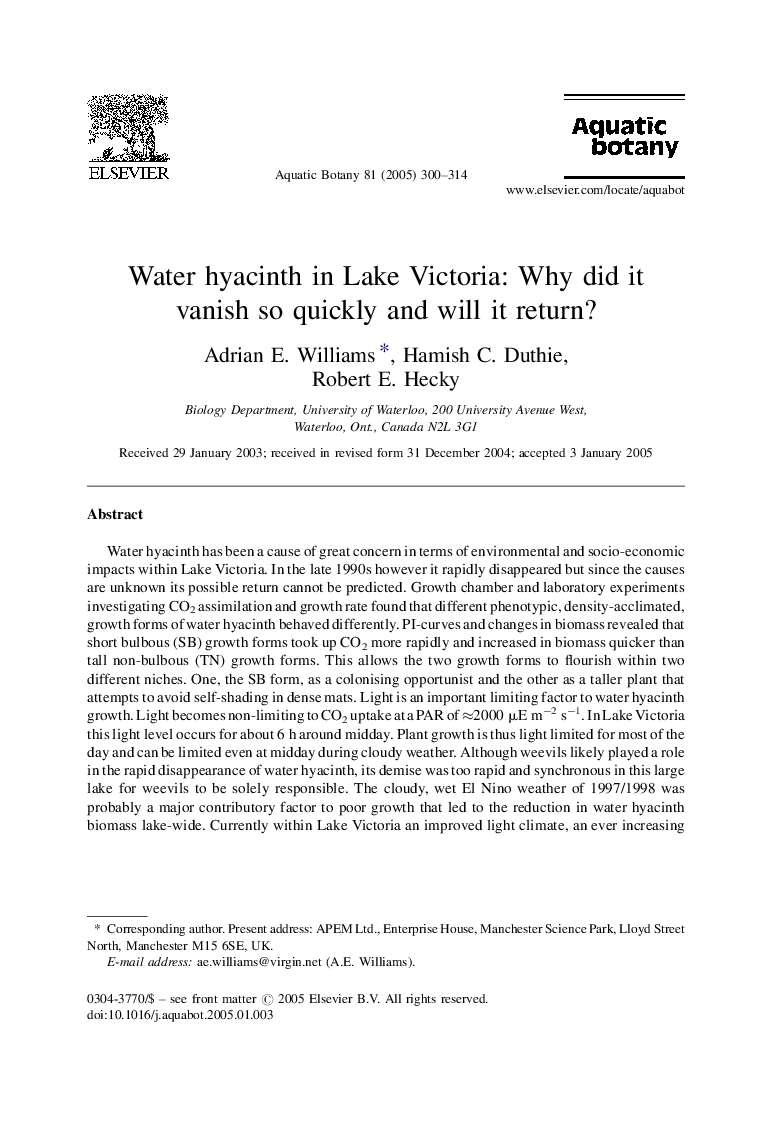| Article ID | Journal | Published Year | Pages | File Type |
|---|---|---|---|---|
| 9477592 | Aquatic Botany | 2005 | 15 Pages |
Abstract
Water hyacinth has been a cause of great concern in terms of environmental and socio-economic impacts within Lake Victoria. In the late 1990s however it rapidly disappeared but since the causes are unknown its possible return cannot be predicted. Growth chamber and laboratory experiments investigating CO2 assimilation and growth rate found that different phenotypic, density-acclimated, growth forms of water hyacinth behaved differently. PI-curves and changes in biomass revealed that short bulbous (SB) growth forms took up CO2 more rapidly and increased in biomass quicker than tall non-bulbous (TN) growth forms. This allows the two growth forms to flourish within two different niches. One, the SB form, as a colonising opportunist and the other as a taller plant that attempts to avoid self-shading in dense mats. Light is an important limiting factor to water hyacinth growth. Light becomes non-limiting to CO2 uptake at a PAR of â2000 μE mâ2 sâ1. In Lake Victoria this light level occurs for about 6 h around midday. Plant growth is thus light limited for most of the day and can be limited even at midday during cloudy weather. Although weevils likely played a role in the rapid disappearance of water hyacinth, its demise was too rapid and synchronous in this large lake for weevils to be solely responsible. The cloudy, wet El Nino weather of 1997/1998 was probably a major contributory factor to poor growth that led to the reduction in water hyacinth biomass lake-wide. Currently within Lake Victoria an improved light climate, an ever increasing supply of nutrients and a potentially unstable weevil population will likely allow the resurgence of this aggressive weed.
Related Topics
Life Sciences
Agricultural and Biological Sciences
Aquatic Science
Authors
Adrian E. Williams, Hamish C. Duthie, Robert E. Hecky,
